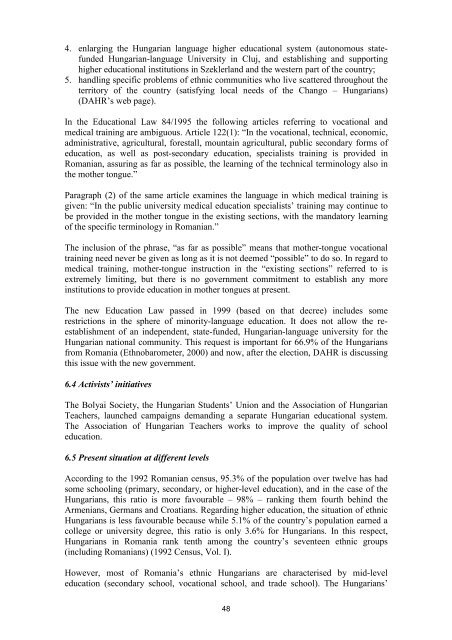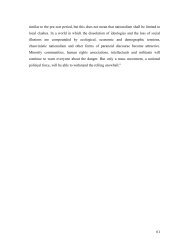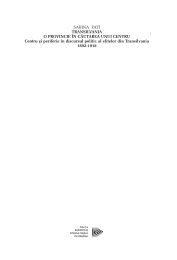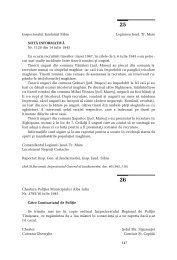Southeast Europe
Southeast Europe
Southeast Europe
Create successful ePaper yourself
Turn your PDF publications into a flip-book with our unique Google optimized e-Paper software.
4. enlarging the Hungarian language higher educational system (autonomous statefunded<br />
Hungarian-language University in Cluj, and establishing and supporting<br />
higher educational institutions in Szeklerland and the western part of the country;<br />
5. handling specific problems of ethnic communities who live scattered throughout the<br />
territory of the country (satisfying local needs of the Chango – Hungarians)<br />
(DAHR’s web page).<br />
In the Educational Law 84/1995 the following articles referring to vocational and<br />
medical training are ambiguous. Article 122(1): “In the vocational, technical, economic,<br />
administrative, agricultural, forestall, mountain agricultural, public secondary forms of<br />
education, as well as post-secondary education, specialists training is provided in<br />
Romanian, assuring as far as possible, the learning of the technical terminology also in<br />
the mother tongue.”<br />
Paragraph (2) of the same article examines the language in which medical training is<br />
given: “In the public university medical education specialists’ training may continue to<br />
be provided in the mother tongue in the existing sections, with the mandatory learning<br />
of the specific terminology in Romanian.”<br />
The inclusion of the phrase, “as far as possible” means that mother-tongue vocational<br />
training need never be given as long as it is not deemed “possible” to do so. In regard to<br />
medical training, mother-tongue instruction in the “existing sections” referred to is<br />
extremely limiting, but there is no government commitment to establish any more<br />
institutions to provide education in mother tongues at present.<br />
The new Education Law passed in 1999 (based on that decree) includes some<br />
restrictions in the sphere of minority-language education. It does not allow the reestablishment<br />
of an independent, state-funded, Hungarian-language university for the<br />
Hungarian national community. This request is important for 66.9% of the Hungarians<br />
from Romania (Ethnobarometer, 2000) and now, after the election, DAHR is discussing<br />
this issue with the new government.<br />
6.4 Activists’ initiatives<br />
The Bolyai Society, the Hungarian Students’ Union and the Association of Hungarian<br />
Teachers, launched campaigns demanding a separate Hungarian educational system.<br />
The Association of Hungarian Teachers works to improve the quality of school<br />
education.<br />
6.5 Present situation at different levels<br />
According to the 1992 Romanian census, 95.3% of the population over twelve has had<br />
some schooling (primary, secondary, or higher-level education), and in the case of the<br />
Hungarians, this ratio is more favourable – 98% – ranking them fourth behind the<br />
Armenians, Germans and Croatians. Regarding higher education, the situation of ethnic<br />
Hungarians is less favourable because while 5.1% of the country’s population earned a<br />
college or university degree, this ratio is only 3.6% for Hungarians. In this respect,<br />
Hungarians in Romania rank tenth among the country’s seventeen ethnic groups<br />
(including Romanians) (1992 Census, Vol. I).<br />
However, most of Romania’s ethnic Hungarians are characterised by mid-level<br />
education (secondary school, vocational school, and trade school). The Hungarians’<br />
48









